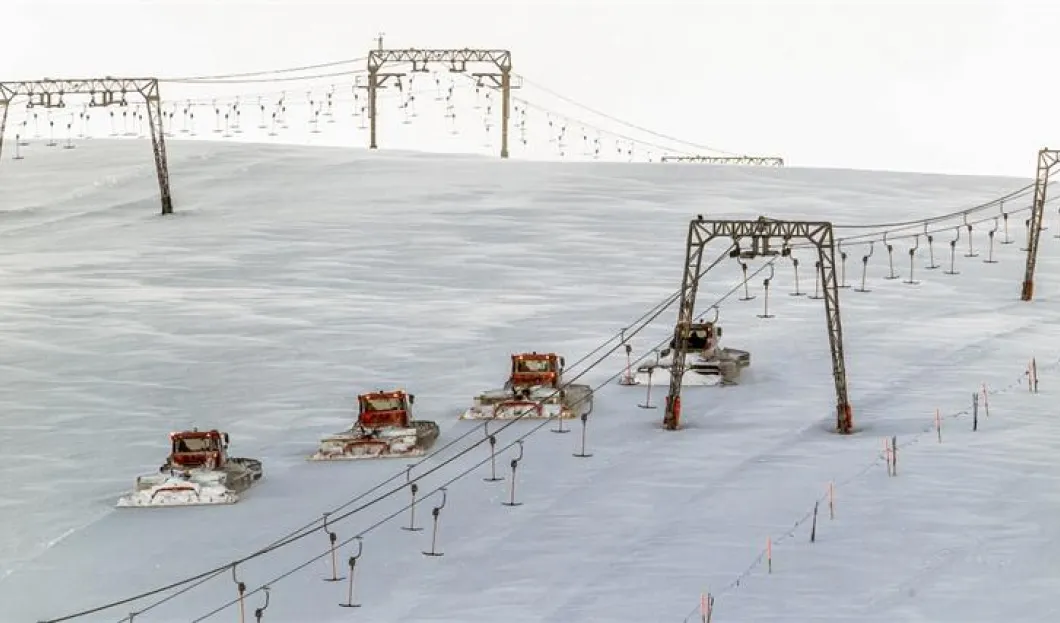
Alpine winter tourism is one of Austria’s most important economic sectors, but it is also one of the largest drivers of natural disasters in the countries’ mountainous landscapes.
Reaching 30,000 kilometers in length, the ski slopes of the Alps cover almost three quarters of the earth’s circumference. 11,000 lifts and cableways are already available. Nevertheless, 164 new facilities are planned in the Alps, 82 of them in Austria. This will lead to further overload of the natural areas and increased ecological footprint.
“The top alpine landscape contingents are French and Austrian ski resorts. Mega-ski resorts in high altitudes are particularly harmful. They cut ecosystems, reduce the habitat of threatened species and displace disturbance-sensitive wild animals such as the black grouse and snow bunnies,” Josef Scrhank from WWF Austria summarized the results of a recent study on the impact of winter tourism by Alfred Ringler.
For the first time, the renowned Bavarian landscape ecologist has investigated the ecological footprint of four decades of ski tourism and altogether compared 1,000 ski resorts with regard to their environmental impact.
The results of the study show a dilemma. Especially smaller ski resorts near the valley, which are usually more sustainable and have a lower ecological footprint, are abandoned more frequently due to the competitive pressure and lack of safety. Meanwhile, the large ski areas in the region are constantly expanding in sensitive Alpine resorts.
The ecological load limit has already been exceeded. In Austria, this applies, for example, to the Tyrolean districts of Kizbuehel – Landeck, Kufstein, Zell am See, and Swaz. The ski area with the largest ecological footprint in the Alps is Sölden, and it is still to be expanded.

The construction and operation of winter sports centers affects almost all habitats and species in the Alps. It also affects the stability of the mountain landscape. This can trigger or intensify slopes and muds.
“Slope planning, access roads, forestry and constructions of snowmaking facilities have drawn a trail of desolation in our mountainous landscapes,” Liliana Dagostin from the Austrian Alpine Association said.
“Whole landscapes are being rebuilt to adapt the slopes to the needs of the average skier and to the requirements of snow-making. If the alpine ecosystems are not to collapse sooner or later, there is a need to end skiing and winter tourism. Especially for facilities in the highest mountain regions,” Dagostin added.
There are 55 mega ski resorts in France (20), Austria (17), Italy (10) and Switzerland (8) that are larger than 2,000 hectares. The ski operation meets the most sensitive ecosystems, which cannot recover from such treatment.
However, winter tourism does not only jeopardize the future of alpine species and valuable habitats. It also endangers essential ecosystem services. The clearing of sludge fields and soil compaction on the slopes increase the risk of erosion.
For WWF Austria and the Austrian Alpine Association, the most important requirement is a legally binding and universally respected spatial concept, which results from the study. Responsible spatial planning, with which the use of the ground is organized in a predictive manner and the consumption of space is minimized.
Against the backdrop of Austrian Presidency in the Alpine Convention, the Environment Minister will have to develop Alpine-friendly tourism and mobility concepts in 2017 – both for winter and for summer.
Ringler evaluated almost 1,000 ski resorts by means of the intervention index (land use, clearing, planning, erosion, snow-making, etc.). The higher the impact index (number in brackets) of a ski resort, the greater its landscape exposure. The number before the resorts indicate its position in the ranking. The definition and designation of the ski resorts is based on ethnological context and may therefore differ from those of ski operators or tourism statistics.
Resorts with the largest ecological footprint:
Tirol
1. Sölden (120)
3. Ischgl (105)
13. Obergurgl-Hochgurgl (95)
Salzburg
27. Leogang-Saalbach Hinterglemm (85)
43. Kaprun-Kitzsteinhorn (80)
44. Schmittenhöhe (80)
Kärnten
21. Innerfragant (88)
35. Kleinkirchheim/ St.Oswald (84)
93. Naßfeld (64)
Steiermark
12. Schladming-Skischaukel (95)
83. Galsterbergalm (66)
115. Spital am Semmering (63)
Vorarlberg
71. Hochkrumbach-Arlberg-Zürs (70)
178. Gaschurn-Gallenkirch (56)
179. Schruns/ Sennigrat (56)
Oberösterreich
74. Obertraun/ Krippenstein (69)
108. Grünau/ Almtal (63)
131. Hintertal/Gosau (60)
Niederösterreich
130. Unterberg (60)
162. St. Corona am Wechsel (57)
163. Mönichkircher Schwaig (57)









